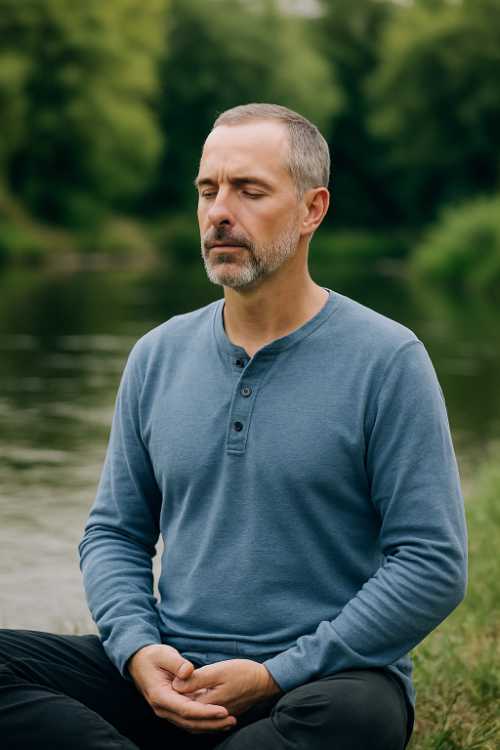The Wisdom of Traditional Chinese Medicine:
Balance, Prevention, and Harmony
For thousands of years, Traditional Chinese Medicine (TCM) has offered a holistic approach to health and healing. While modern Western medicine often focuses on diagnosing and treating disease, TCM looks first at balance between body and mind, individual and environment, yin and yang. Far from being an outdated system, its principles continue to resonate today, offering valuable tools that complement contemporary healthcare.
A Universe Within Us
TCM begins with a simple but profound idea: the human body is a reflection of the universe. Just as the world around us moves through cycles of day and night, summer and winter, activity and rest, so too does the body. Health comes when these rhythms are in harmony, and illness arises when they fall out of balance.
This philosophy is built on three essential elements: jing (精 essence), qi (氣 energy), and shen (神 spirit). Jing is the foundation of growth and vitality; qi is the life force that powers every function of the body; and shen is the spark of consciousness and awareness. Together, these three treasures form the bedrock of human health.
Yin and Yang: The Dance of Balance
Perhaps the most recognizable concept in Chinese medicine is yin and yang. These two forces are opposite but inseparable: yin is cool, dark, and restful, while yang is warm, bright, and active. Neither is “good” or “bad” and both are essential. When yin and yang are balanced, the body thrives; when one dominates, problems emerge.
This principle doesn’t just apply to the body’s organs or systems. It extends to lifestyle choices, diet, emotional health, and even the time of year. For example, eating cooling foods like cucumber in the heat of summer supports balance, while warming foods like ginger are better suited to cold winter months.
Flowing Energy and the Meridian System
Another cornerstone of TCM is the idea that qi travels through channels called meridians. These pathways link the body’s organs and tissues much like rivers nourish a landscape. When qi flows freely, health is strong. When the flow is blocked, symptoms develop.
Acupuncture and acupressure are based on this principle, using specific points along the meridians to restore smooth circulation of qi. This is not unlike clearing a clogged waterway so life can flourish downstream.
Wisdom from the Yellow Emperor
The earliest written record of Chinese medicine is the Huangdi Neijing ("Yellow Emperor’s Classic of Internal Medicine") compiled more than 2,000 years ago. In the form of a dialogue between the emperor and his physician, it explains how health depends on living in tune with natural laws, and it introduces many of the diagnostic and therapeutic methods still used today.
Prevention Before Cure
One of the most appealing aspects of TCM is its emphasis on prevention. Instead of waiting until illness appears, practitioners encourage habits that preserve balance: proper rest, seasonal eating, emotional awareness, and moderate exercise. This philosophy aligns closely with modern ideas of “wellness” and preventive medicine.
When illness does arise, diagnosis relies on careful observation rather than lab tests alone. A practitioner may study the tongue, listen to the voice, or feel the pulse to detect imbalances. Treatments are then customized to the individual, often combining acupuncture, herbal medicine, dietary advice, and exercises like Qigong.
Complementary, Not Competitive
For many people today, TCM offers a valuable complement to Western medicine. While modern medicine excels at acute care, surgery, and lifesaving interventions, Chinese medicine provides gentle, natural approaches for chronic conditions, stress, and overall vitality. Increasingly, patients and doctors alike are exploring integrative approaches, recognizing that both systems have strengths.
Living in Harmony
At its heart, Traditional Chinese Medicine is less about “curing” disease and more about cultivating harmony with the world around us. It teaches that health is a dynamic process of balance, awareness, and adaptation. For anyone seeking to live not just longer but better, TCM offers both practical tools and timeless wisdom.
Vocabulary Guide
- Jing 精 – Essence; the fundamental substance that supports growth, development, and reproduction.
- Qi 氣 – Vital energy or life force that flows through the body’s meridians and powers all activity.
- Shen 神 – Spirit or consciousness; the mind and awareness that animates life.
- Yin 陰 / Yang 陽 – Complementary forces representing cool/dark/rest and warm/bright/activity; health depends on their balance.
- Meridians 經絡 (Jīngluò) – Channels or pathways through which qi circulates, connecting organs and tissues.
- Huangdi Neijing 黃帝內經 – The Yellow Emperor’s Classic of Internal Medicine; foundational text of Chinese medicine.
- Qigong 氣功 – A practice combining movement, breathing, and meditation to cultivate and balance qi.



